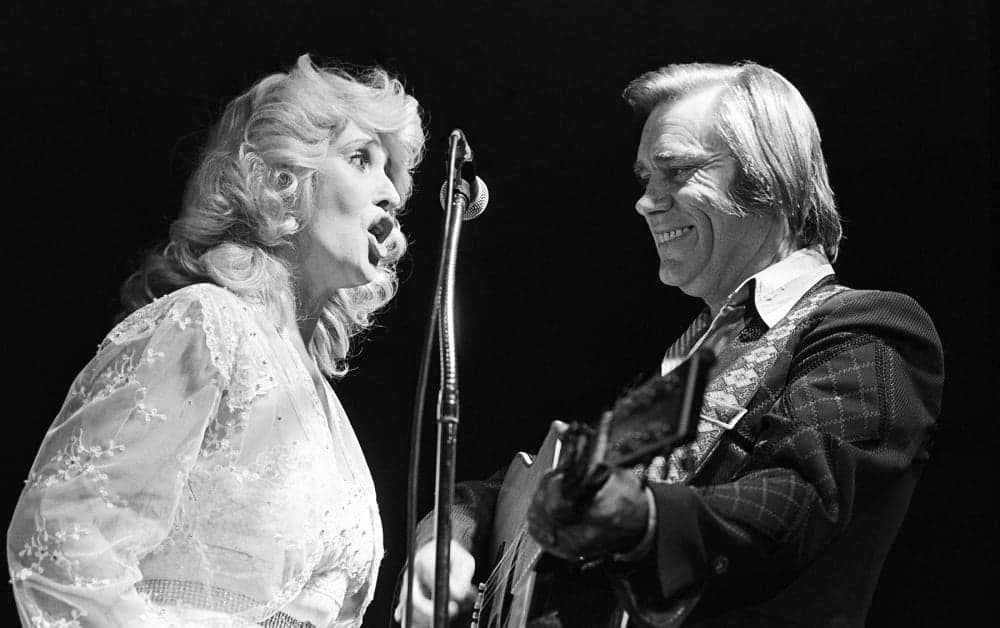
That Old-Time Religion and the Turmoil of Two Legends
Oh, the memories that flood back when that familiar, jaunty piano intro kicks in! Long before the tragic end of their union, when the world hung on every tearful ballad and every fiery feud, there was a period when George Jones and Tammy Wynette sought solace not just in each other’s arms, but in the enduring promise of faith. The song, “Let’s All Go Down to the River,” released in 1972 on their third collaborative album, We Love to Sing About Jesus, stands as a fascinating and deeply telling artifact from their personal and professional life.
As a single, the song itself did not chart individually, but it was a crucial, lively track on an album that represents a detour from their usual heartbreak fare. The parent album, We Love to Sing About Jesus, was released by Epic Records in November 1972 and peaked at a surprisingly modest No. 38 on the U.S. Country chart. It was a lower position than their typical offerings, suggesting that while the public devoured their songs of marital bliss and torment, their spiritual side was a taste reserved for the devout core of their fanbase. The true single from this gospel project was “Old Fashioned Singing,” which only managed to reach No. 38 on the country singles chart, making “Let’s All Go Down to the River” a cherished album cut—a spiritual deep track for those who truly followed the Possum and the First Lady of Country Music.
The profound meaning behind “Let’s All Go Down to the River,” written by the venerable Earl Montgomery and Sue Richards, is one of simple, communal Christian salvation. It is a classic, upbeat Southern Gospel invitation—a call for all listeners to come to the river for baptism, to see “this man walking on the water,” and to wash away their sins. With its barrelhouse piano and the energetic, back-and-forth harmonies of Jones and Wynette, it sounds like a joyous Sunday morning service bursting out of the radio.
Yet, knowing what we know now, the context of its release is what truly lends it a bittersweet, nostalgic poignancy. 1972 was a time of immense, well-documented turbulence in their marriage. As their duet hits like “We’re Gonna Hold On” chronicled their domestic struggles, their decision to record an entire album dedicated to their faith feels like a genuine, if ultimately unsuccessful, attempt to find a solid moral anchor for their rocky relationship. This song, with its hopeful, unifying lyrics, was perhaps more of a prayer or an aspiration than a reflection of their immediate reality. It suggests a yearning for the peace and forgiveness that often seemed just out of reach in their whirlwind life of fame, addiction, and public drama.
For an older generation of fans, listening to “Let’s All Go Down to the River” is a unique experience. It offers a fleeting glimpse of the good times, the hope, and the shared faith they desperately clung to. It’s not the monumental tragedy of a song like “He Stopped Loving Her Today,” but a spirited, simple tune that reminds us that even country music royalty, in the midst of their own personal civil war, needed a spiritual refuge. It’s the sound of George and Tammy trying to sing their way to salvation, a joyous noise that makes us remember a bygone era when country music, even in its most dramatic moments, was always rooted in the simple truths of life, love, and the Lord.